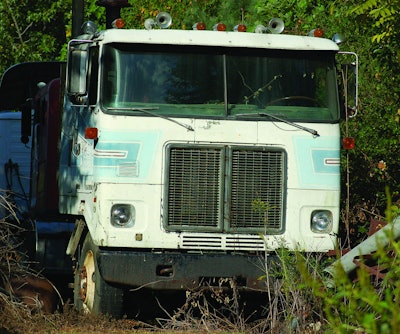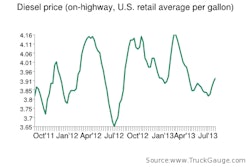
But for the most part, these guys spend their days behind the wheel driving a set route or on a track following strict parameters set by the engineering staff as they attempt to work out one problem or another on the vehicle. All in all, it means an awful lot more time at home with the family than fleet drivers typically see, and you get to see the newest trucks and hardware long before anyone else. Small wonder, if you talk to them, that you find many of them think they’ve found their dream job in the trucking industry.
One part of their job is to ride shotgun at media and dealer events when a journalist or fleet executive climbs into the cab and behind the wheel. They know the vehicles inside and out, can answer any question you have and can gently coach a novice driver – or a journalist who doesn’t get as much time behind the wheel as they’d like – in the finer points of commercial vehicle safety.
I’ve driven a lot of trucks with these guys, and I’ve conducted sort of an unofficial survey over the years. I always ask them: Among the different groups of people they take on test drives, who tends to scare them the most? Is it the dealers or the salesmen? How about journalists or fleet customers? What about the company engineers or executives?
The answer, more often than not, is fleet owners. As one track driver told me recently, “Most of them used to drive, but they don’t anymore, so they’re rusty. But they’re the boss. So they feel like they’ve got something to prove sometimes. And some of them can really scare the hell out of you.”
On one level, this is just a funny little anecdote about the bossman’s ego and his abilities behind the wheel. But maybe there’s more to it. The boss ultimately OKs new technology options for the fleet’s vehicles. And if someone is shown that something can increase fuel efficiency, decrease maintenance costs and improve highway safety – say, an automated transmission – how big a role does that decision-maker’s own abilities behind the wheel play into the acceptance or rejection of that technology?
In other words, his mindset could be “Yes. The best drivers are getting old and retiring. And the new ones we’re hiring will be safer and make us more money with these transmissions.” Or it might be “The old technology was good enough for me. And it ought to be good enough for anybody driving for me.”
People don’t like change. And in the trucking industry, “change” usually means “more expensive.” But that doesn’t mean you should discount any new technology or safety system just because you got by without it back in the day.
Everywhere we look today, the signs point to a relentless push toward more technology in commercial vehicles and a greater government-driven emphasis on safer operations. It’s still possible for fleets to resist those trends. On the other hand, it’s only a matter of time before other companies that adopt these new technologies pass them by.
The old days were great, but they’re gone – and they’re not coming back. That’s something to think about next time one of those manufacturer drivers is sitting over in the passenger seat explaining a new piece of technology to you.











